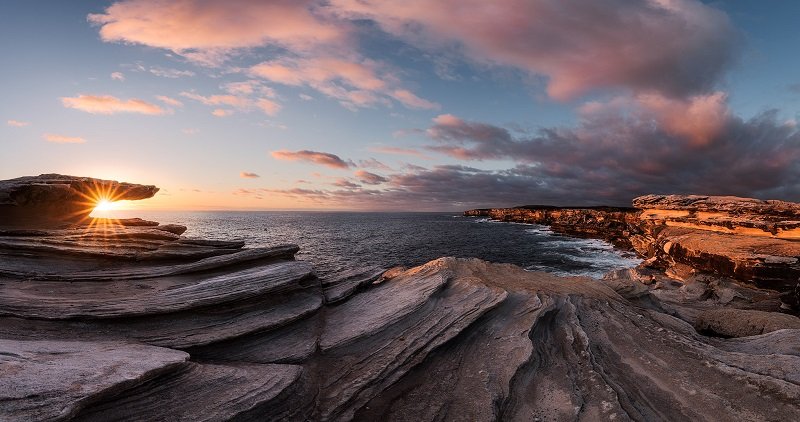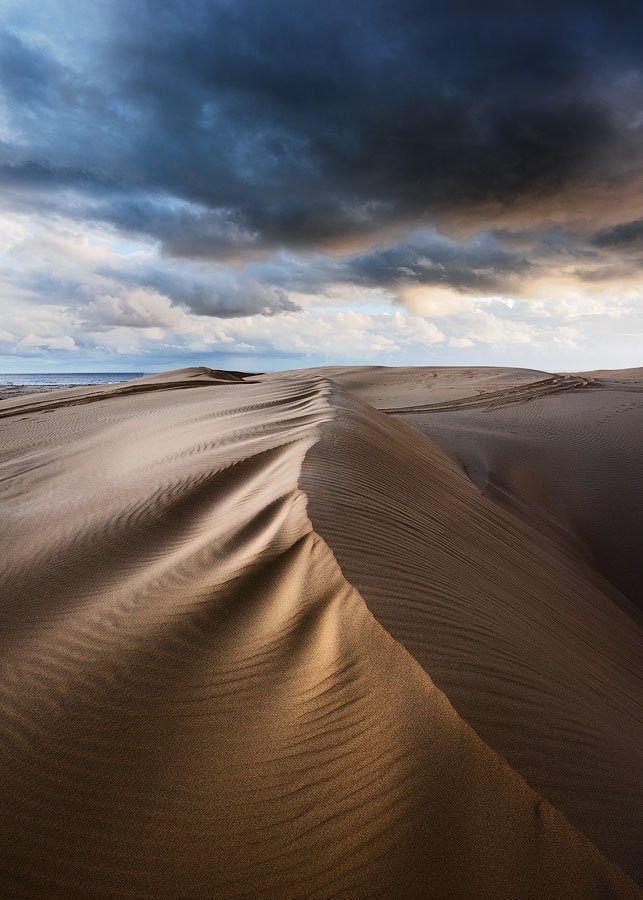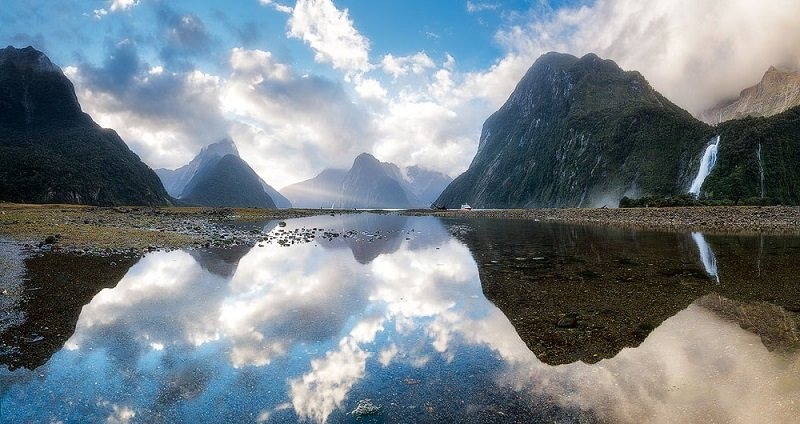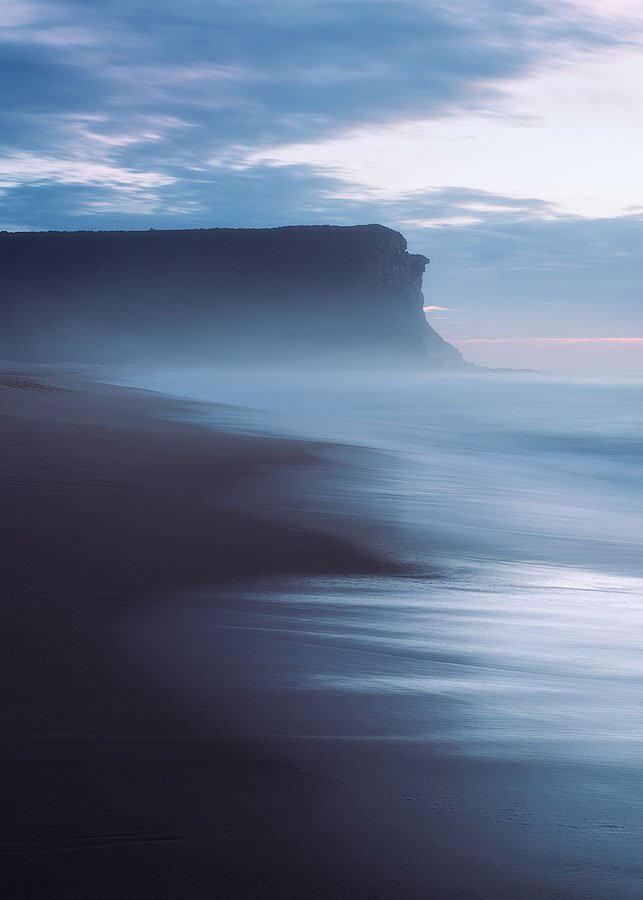Behind the Lens – Anton Gorlin
by Alex W.
Behind the Lens is an ongoing series of articles and interviews exploring the thought process behind successful and excellent photographers. It brings you behind the lens of a particularly excellent image and explains the technical and creative elements that went into creating the photograph.
This week on Behind the Lens, we meet Anton Gorlin, a successful landscape and real estate photographer operating from his base in Sydney, Australia. His Australian landscape images have been published in various international outlets, and this week we look behind his gorgeous panoramic seascape on the Australian coastline, shown below.

Click and Learn Photography: Hi Anton, tell us a bit about yourself. How long have you been photographing landscapes and how did you get started in photography?
Anton: Hey, my name is Anton. I’m originally from Ukraine and I’ve been living in Sydney, Australia for several years now. I’m a software developer, which allowed me to immigrate. So, before 2007 I never thought of becoming a photographer. Moreover, I laughed off such suggestion when some astrologist told me that. Like, you can download pics if you need to. Then there was a business trip to Australia and I got my first compact camera for that. I wanted to photograph koalas and roos. A few weeks was enough to turn the world around!
When I came back home, I went to some short course to get into the technical side of photography, then got Nikon D80 and never stopped since. I tried multiple genres, but nothing could beat the landscape photography for me. It inspires me, it energizes me, it challenges me. And the hardest part of the whole process is editing, which I’ve spent a lot of time studying online. Also, on a side, I’m a real estate photographer for more than 6 years now, I shoot for Airbnb and thinking of starting something on top of it this year. I found this opportunity accidentally. Not that I believe that accidents are accidental. I was having a bad period of life and went to browse Linkedin groups (never did it before or after) and found an open call for photographers. I applied and showed them my landscapes and somehow it worked out. That’s how it all started.
Click and Learn Photography: That’s pretty similar to how my own photographic adventure began. You mentioned how you’ve spent a lot of time studying post-processing, and it’s clearly paid off. This photograph in particular is beautifully vibrant but also quite subtle with gradual changes and soft transitions. Do you use any specific methods to achieve this natural effect? Is it just a lot of fine tuning between Lightroom and Photoshop or something more advanced?

Anton: The best advice is not to touch the Saturation slider if you know what I mean. My workflow includes Adobe Bridge, Photoshop ACR and Photoshop CC. No Lightroom. I dislike it and it looks overly sophisticated for me. I don’t usually batch edit files and when I do, ACR does just what I need.
I spend a lot of time in raw conversion because every bit of contrast and color and sharpness you get here is a better deal than doing the same later in Photoshop. Then I transfer into Photoshop using 16bit PhoPhoto profile and edit there using Luminosity Masks. The best investment I did was into Sean Bagshaw tutorial videos on luminosity masks and editing in general. It was a giant leap for me. It took me a while to learn to and I couldn’t beat Nik Software filters at first, but now I switched to the manual editing altogether. Apart from that, I bought a few online courses for color grading recently and it’s been useful as well.
Click and Learn Photography: I definitely agree with you on the saturation slider. It seems like you have a very well thought out workflow in post processing, is that something that you built up to over time as you learned new techniques? Do you apply the same sort of logical approach when composing in the field, or is that more a more intuitive process? For example, with this shot did you have the composition planned out before you arrived or was it something you were drawn to when you realised that the sun would pass through that gap and create a sunburst?
Anton: I evolved to this workflow. Previously, I was editing raw files in Capture NX2 as it offered way better colour profiles with ACR producing some washed out muddy colours. This is no longer the case and I have simplified my workflow since.
Now regarding the composition. It may seem I have to be overly technical because of my profession, but that wouldn’t be true. The way I build the photos is a combination of both as a pure techie approach is too boring. Once you think of something for a long time, it blends into you and you can no longer distinguish the intuition from experience. I try to be as intuitive as possible with my photos, but I also know that some tricks always work (like a starburst). For this particular photo it was entirely intuitive. I was shooting closer to the edge with more water in the frame and then I turned my head and saw the curve. I did a few steps back and positioned the Sun into it. Then I looked around trying to balance the composition, tried a few shots and it appeared that pano works best for the given environment (I couldn’t move at all as the Sun position locked me in). So it was an intuition at first, then analysis.
Click and Learn Photography: I have to say, it’s a very well balanced composition considering it was unplanned and the time constraints associated with capturing a starburst. I especially like the line the coastline makes and the way the clouds mirror the land. Is this down to an ingrained local knowledge of the area or do you simply work very well under pressure? Is this a stretch of coastline you photograph regularly, and if so how important do you feel that deep knowledge of the surrounding area is to your landscape photography?

Anton: I was at that place for a second time when I created this photo and had no perfect knowledge of the area. To be honest, I stretched the clouds a bit using Warp because they were a little smaller than I wanted them to be.
However, the location knowledge is super important. I have one spot in Sydney, that I photograph regularly. I’ve been there maybe 50 times and now I know where to go for certain weather conditions; which part in the 1km radius would work best for big waves, for small waves, from strong wind, for low tide, etc. I always advise everyone to research the location before going out, especially if it’s the sunrise. The scouting in the darkness is very limited and can actually be dangerous. Research using the Internet or by walking around in daylight. Different apps help too. And still, it all depends on the weather, so nothing ever goes 100% as planned.
Click and Learn Photography: I definitely agree, and actually think becoming intimately familiar with local areas is the absolute best way to start producing unique images. Of course, you’ve got to go out to explore and capture those iconic images too!
Regarding apps, I assume you use The Photographers Ephemeris and/or Photopills, but are there any others that you would recommend looking at for the aspiring landscape photographer?
You Might Like…Ultimate Guide to Landscape Photography Pt 3: Planning a Shoot
Anton: I use “Plan It! For Photographers” for my Android phone and to quickly get an idea about the Sun position on a laptop I use suncalc.com. I don’t use any other apps or calculators.
Click and Learn Photography: That’s a similar app to The Photographer’s Ephemeris if I remember correctly.
It’s obvious that you fell in love with Australia when you visited back in 2007, and it’s easy to see why with such an incredibly varied landscape on offer. Are there any particular areas of photography you are planning to hone in on? I see quite a balanced selection of coastal, mountainous, and desert landscapes from you, but is there any one type of landscapes that excites you more than the others and that you plan on focusing on in the future?
Anton: Yes, it’s a similar app, but also has tidal info unlike other apps.
Well, the selection of photos is balanced because it’s a portfolio. In reality, I prefer the seaside and I have way more coastal images than any other type. Of course, I like mountains too and back in Ukraine I used to hike, but not in Australia. The Blue Mountains are less exciting and the Snowy Mountains are a bit far away for me. I really enjoyed my trip to New Zealand and the mountains there are just glorious. But I still prefer the ocean for some reason. I definitely plan to go to New Zealand again in future.
Click and Learn Photography: That makes sense, I guess we all grow more fond of the areas that are more easily accessible to us.
Speaking of your coastal photography, I’ve noticed you tend to avoid the popular approach of capturing ultra long exposures at the coast (barring a few exceptions). Do you feel that retaining that drama of the moving waves is important in portraying the essence of the coast or are you just not a fan of the ‘milky water and clouds’ look?

Anton: That question is spot on! Except for very rare occasions, I prefer water looking like water. You see, when the water is relatively calm, then long exposure makes it level and smooth. When the water is unrest, like the sea of the ocean, then ultra long exposure transforms it into a muddy mess, like a porridge spread along the plate edges. The same applies to the waterfall. Especially waterfalls. Is it a waterfall made of fog? Or is it a bed sheet sticking out of the mountain? I seriously do not understand why people deliberately make water so unnatural.
Sometimes we don’t have a choice, like during the night. In this case, I prefer not to accent on the water and go somewhere high. The only exception is when we are really after the fog effect. For instance, we have a lot of rocks with water crashing between them. In this case, we could get a nice aerial perspective by separating layers of rocks. The other possible scenario is when we smooth it out in order to focus on some other object like in this pic (above right), yet, I would consider it a failed shot if there was no texture at all. Long story short – I try to use all shutter speeds without being obsessed with long exposure for the water.
Click and Learn Photography: Each to their own I guess, although I also prefer keeping the texture and drama in the water too and generally keep shutter speeds below 2 seconds at the coast. But as you said there are occasions when a long exposure does work best, with that photo being a prime example! Thanks for your time Anton and for taking us through your thought processes.
Anton: Yeah, everyone has their own opinion 🙂 Thanks for your time too!
Anton Gorlin is a successful Ukrainian landscape and real estate photographer operating out of Sydney, Australia. His landscapes of the beautiful landscape down under have been published internationally. Click below to see more of his work.
Read More…
Using Leading Lines to Improve Your Photography
Tearing Up the Rulebook – 12 Photography Rules and When to Break Them
Ultimate Guide to Landscape Photography Pt 1
Best Landscape Photography Cameras
 |
 |
 |
 |

About Alex W.
Alex is the owner and lead writer for Click and Learn Photography. An avid landscape, equine, and pet photographer living and working in the beautiful Lake District, UK, Alex has had his work featured in a number of high profile publications, including the Take a View Landscape Photographer of the Year, Outdoor Photographer of the Year, and Amateur Photographer Magazine.
Thoughts on "Behind the Lens – Anton Gorlin"
 |
 |
 |
 |
You can Get FREE Gifts. Furthermore, Free Items here. Disable Ad Blocker to receive them all.
Once done, hit anything below
 |
 |
 |
 |